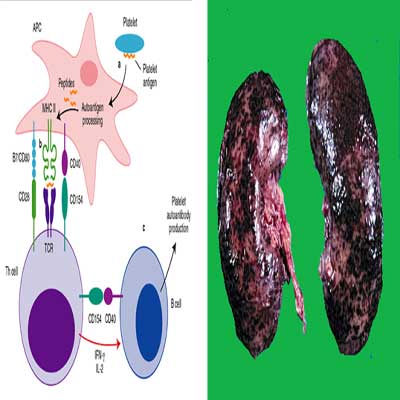ITP/IDIOPATHIC THROMBOCYTOPENIC PURPURA

What Is Idiopathic Thrombocytopenic Purpura?
Idiopathic thrombocytopenic purpura (ITP) is a bleeding disorder in which the blood does not clot as it should. The bleeding is due to a low number of platelets (PLATE-lets), blood cells that help the blood clot and stop bleeding. People with ITP often have purple bruises that appear on the skin. The bruises mean that bleeding has occurred in small blood vessels under the skin.
The words idiopathic, thrombocytopenic, and purpura mean:
- Idiopathic (id-ee-o-PATH-ick) means that the cause of the disease or disorder is not known.
- Thrombocytopenic (throm-bo-cy-toe-PEE-nick) means there is a lower-than-normal number of platelets in the blood.
- Purpura (PURR-purr-ah) are purple bruises where bleeding occurs just under the skin. Purple areas may also appear on the mucus membranes (for example, in the mouth). A person with ITP also may have bleeding that looks like tiny red or purple dots on the skin. These dots, often seen on the lower legs, are called petechiae (peh-TEE-kee-ay). Petechiae may look like a kind of rash.
With ITP:
- People may have nosebleeds, bleeding from the gums when they have dental work done, or other bleeding that is hard to stop.
- Women may have heavy menstrual bleeding.
- Symptomatic bleeding in the brain is very rare but can be life threatening if it occurs.
ITP is largely an autoimmune disease. The decrease in platelets occurs because the immune system attacks and destroys the body's own platelets, for an unknown reason. Normally, your immune system helps your body fight off infections and diseases. But when the immune system mistakenly attacks some part of a person's own body, this is called an autoimmune disease. Because "idiopathic" means "of unknown cause," a better name for most cases of ITP is immune thrombocytopenic purpura.
Types of ITP
There are two types of ITP: acute (temporary or short-term) ITP and chronic (long-lasting) ITP.
- Acute ITP generally lasts less than 6 months It mainly occurs in children, both boys and girls, and is the most common type of ITP. It typically occurs following an infection caused by a virus. This type of ITP often goes away on its own within a few weeks or months and does not return. Treatment may not be needed.
- Chronic ITP is a long-lasting (6 months or longer) type of ITP that mostly affects adults. However, some teenagers and even younger children get this type of ITP. Chronic ITP affects women two to three times more often than men. Treatment depends on how severe the bleeding symptoms are and the platelet count. In mild cases, treatment may not be needed.
Signs and symptoms
Signs that typically indicate a low platelet count and possibly idiopathic thrombocytopenic purpura include:
- Easy or excessive bruising (purpura)
- Superficial bleeding into your skin that appears as a rash of pinpoint-sized reddish-purple spots (petechiae), usually on your lower legs
- Prolonged bleeding from cuts
- Spontaneous bleeding from your gums or nose
- Blood in urine or stools
- Unusually heavy menstrual flows
- Profuse bleeding during surgery
Serious or widespread bleeding indicates an emergency and requires immediate care. |



